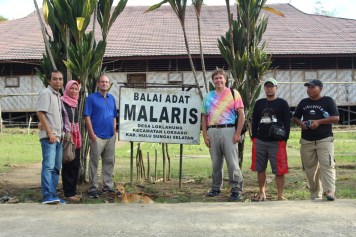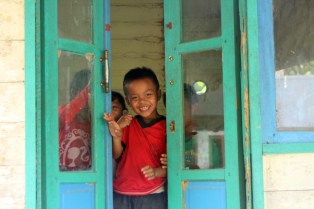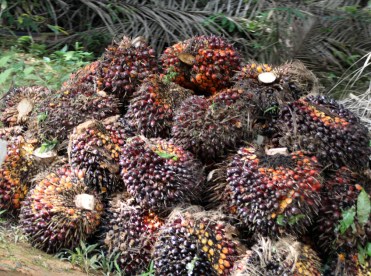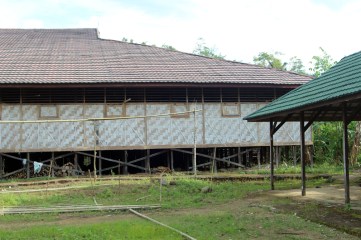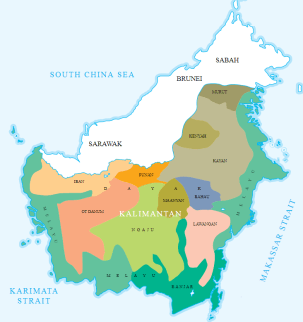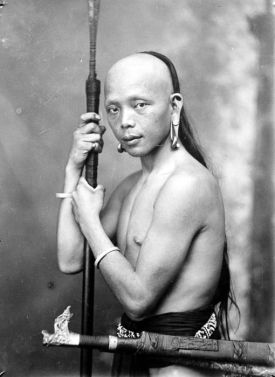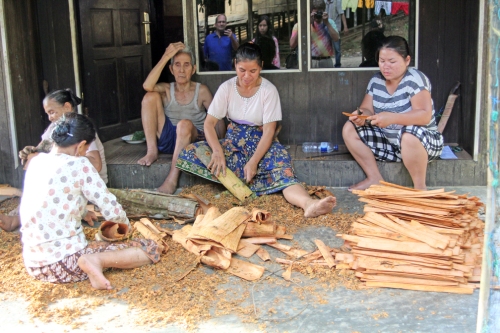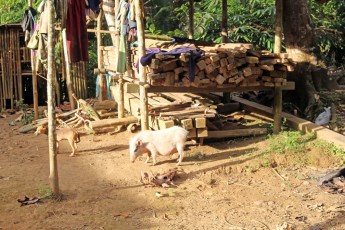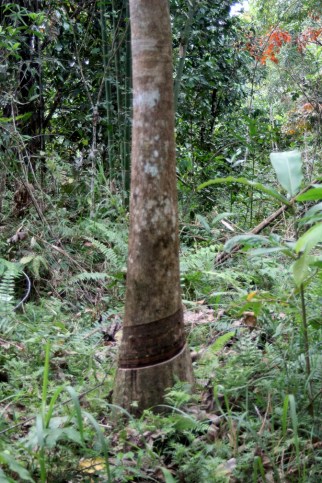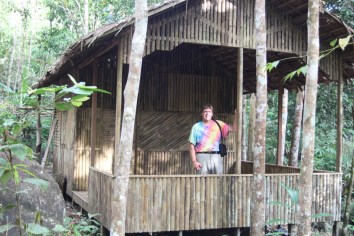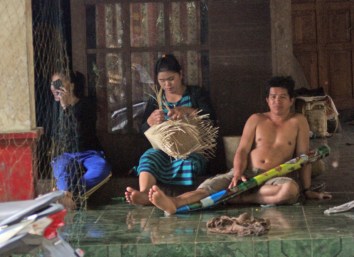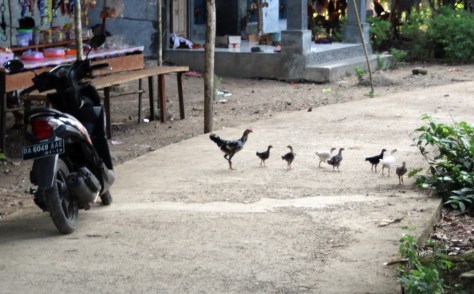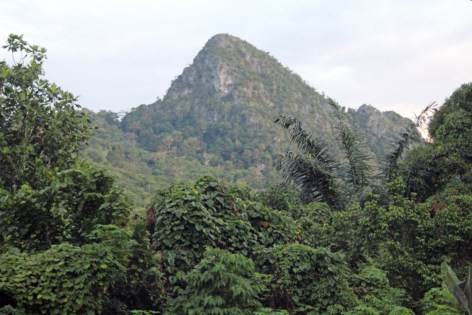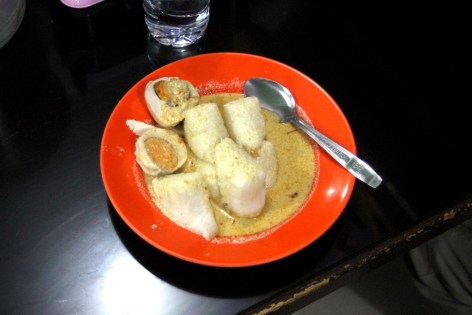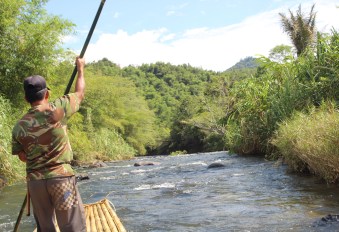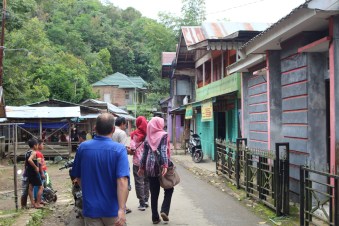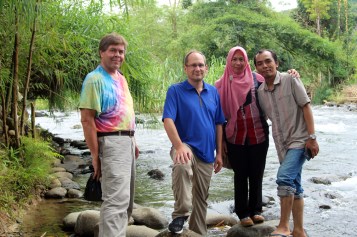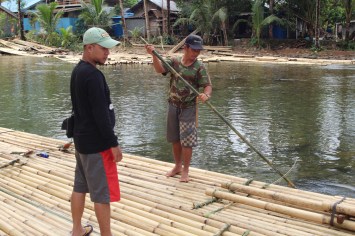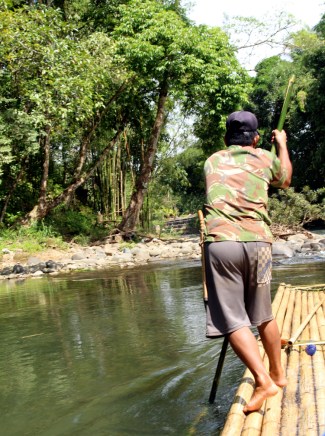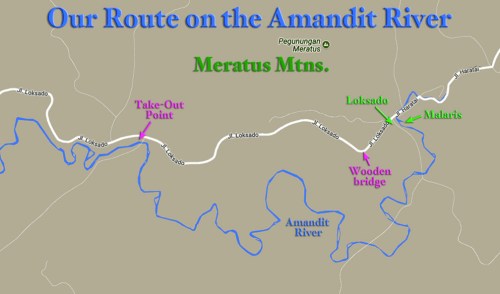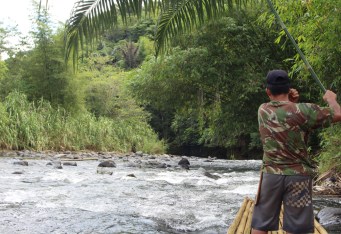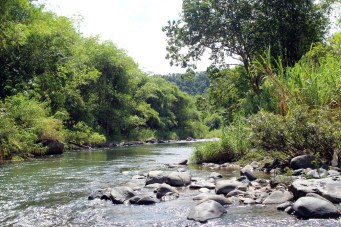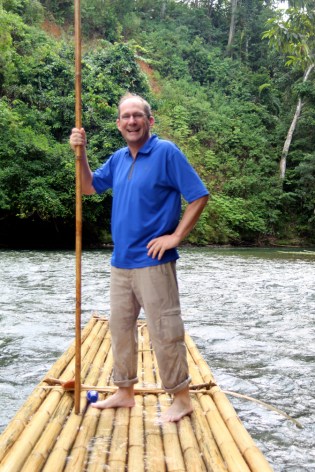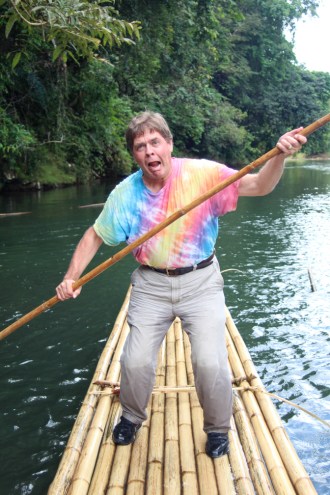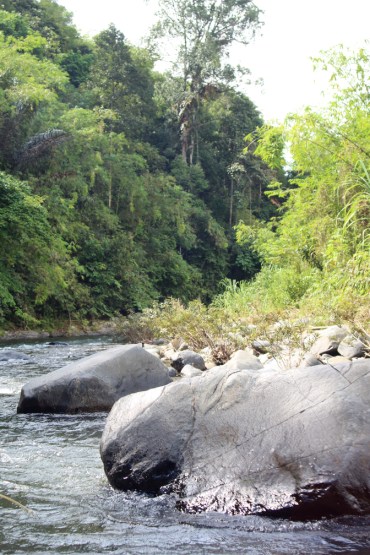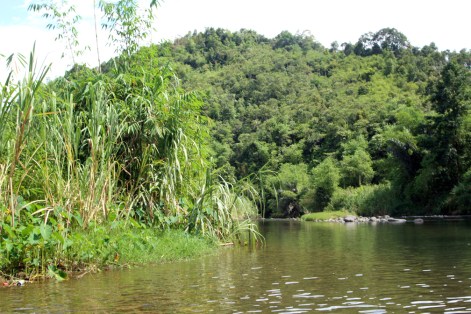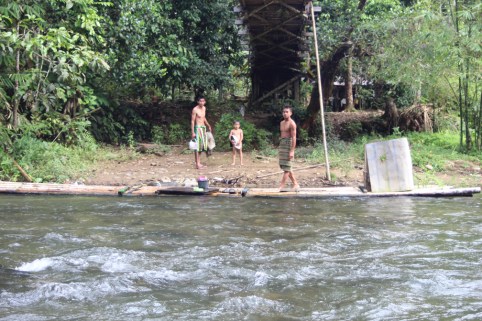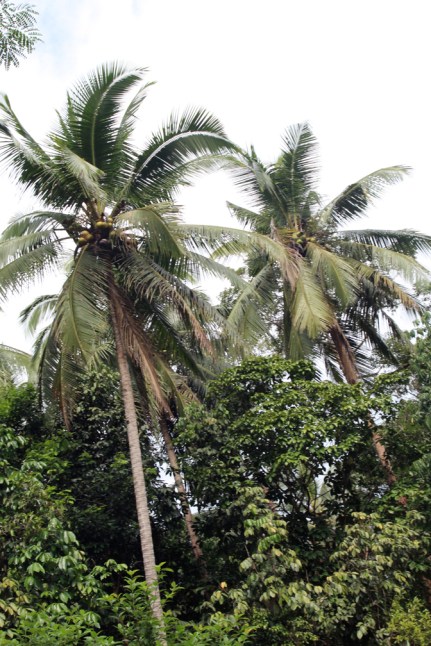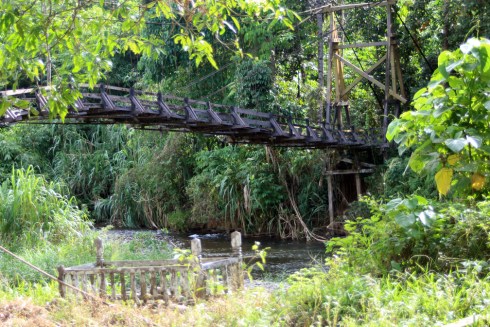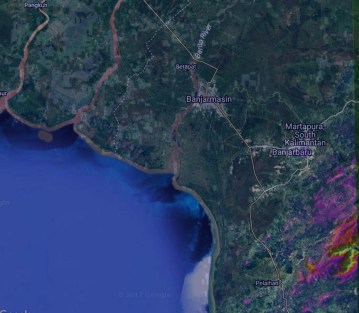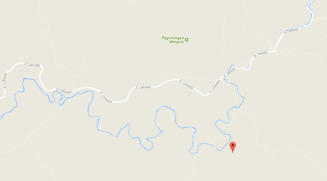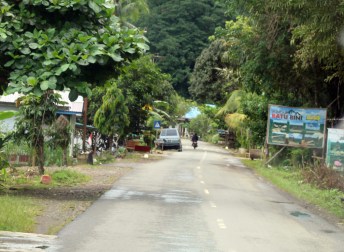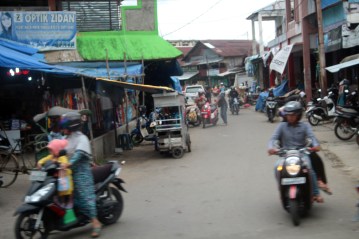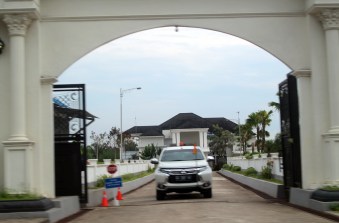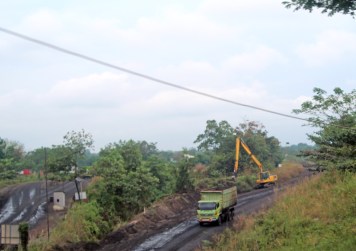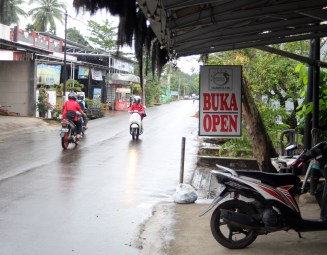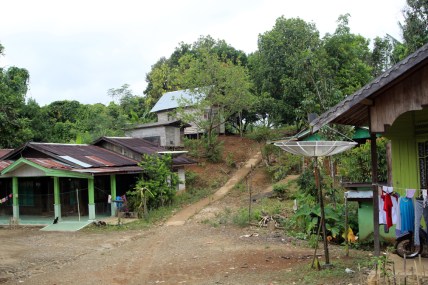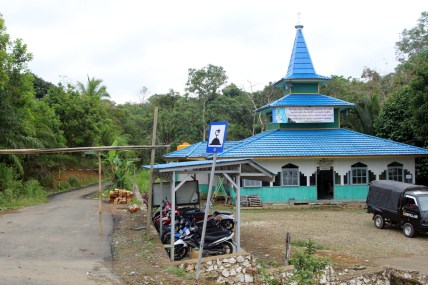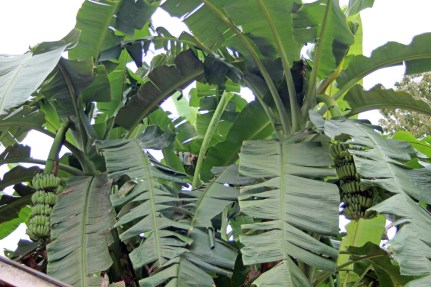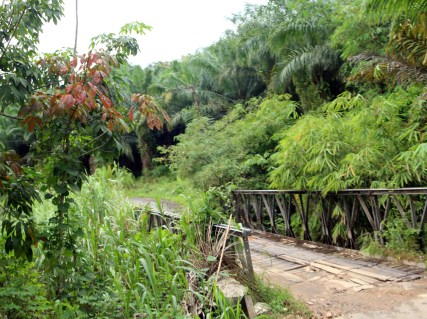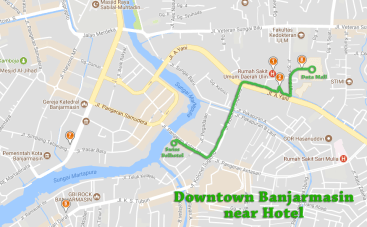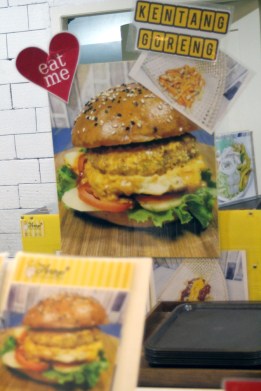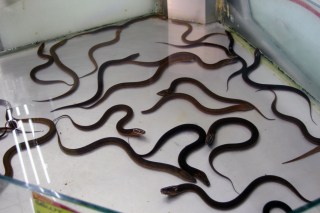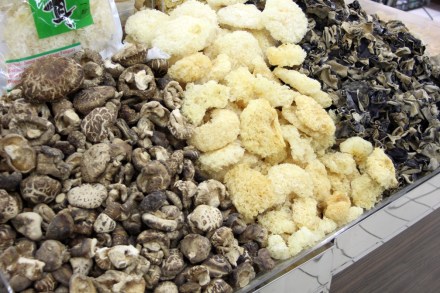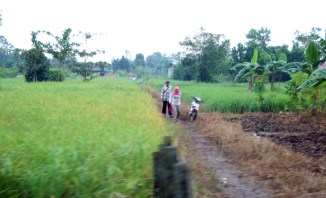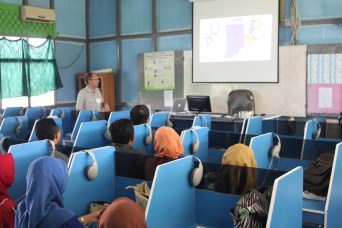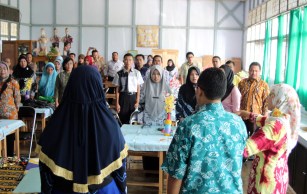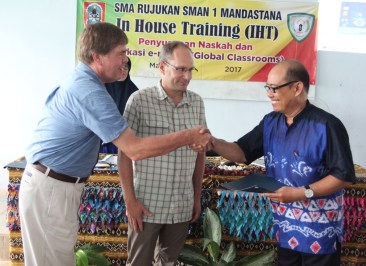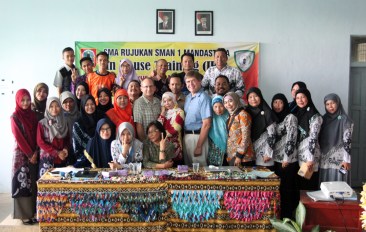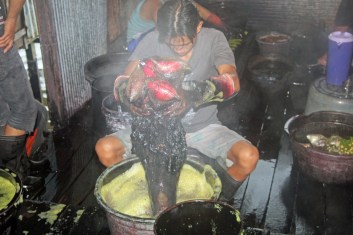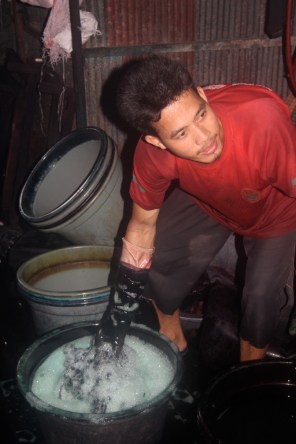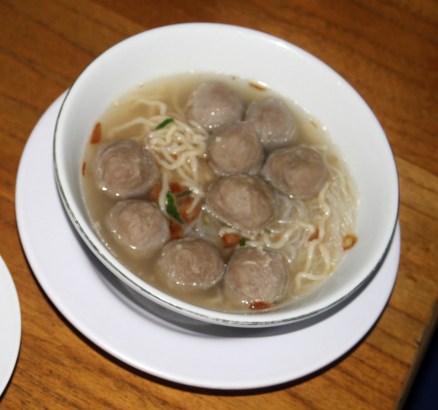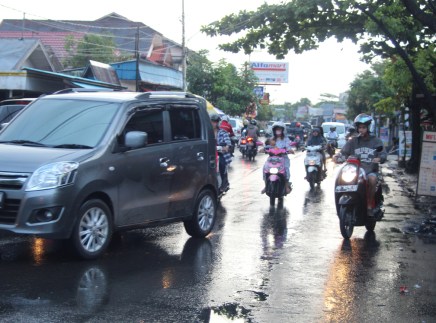Borneo Day 9: Saturday, July 29, 2017

A pedicab and customer, with a food cart, on the streets of Banjarmasin. Notice also that traffic drives on the left side.
This was my last full day in Borneo and a day for catching up on sleep, resting, writing, uploading photos, more resting, and visiting the Duta Mall twice.

A fully-loaded pedicab. I don’t think you can get anything else on this pedicab – the passenger is completely packed in. Notice the large load and side bags on the motorcycle in front. Many people only own a motorcycle and must carry produce and everything else on them. They become experts at balancing loads!
After getting in late last night from our trip to Loksado, we had no plans until 7:15 pm, so Craig and I slept in. It felt good to have an unstructured day. I started the process of uploading my photos and videos from my camera. I took over 450 photos and over 100 videos yesterday, and the hard drive space on my computer is getting thin, so I had to transfer most of my videos so far to my external hard drive and upload the photos and videos from my camera in five sets.

A typical pedicab with passengers in Banjarmasin.
Meanwhile, I took a shower, ate breakfast just before it ended at 9:55, and sent out my laundry (they came to my room to pick it up and delivered it crisp and clean later that afternoon). I wrote to my wife and sons to describe my trip and to promise photos that evening.
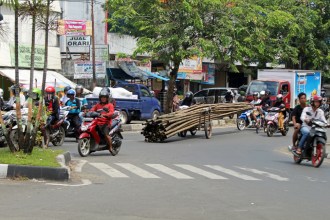
Another example of an overloaded motorcycle. This one has a side cart attached loaded with bamboo.
Craig and I walked to the Duta Mall again to get lunch. It started out overcast, but by the time we got to the first intersection the sun was out and it was hot and humid. My sunburned face wasn’t happy, but there wasn’t much I could do about it. I took some photos of pedicabs, bicycle-based restaurants (resto), and the small lanes that wound past masjid near the canals. I did this because I have been thinking the past few days about what photos I still need to take, of things that most people would find fascinating that I might not be noticing.

Canal, houses, and a mosque in Banjarmasin. They refer to this city as the Venice of Indonesia, and with over 50 canals and rivers, one can see why.
I’ve commented a few times in this series of blog posts that I’ve felt at home here in Indonesia. This is largely because I lived for two years in southern Taiwan as a missionary for the LDS Church (Mormons). This was 36 years ago (1979-1981) and Taiwan then was very much like Indonesia is now, except with lots more bicycles and no cell phones. The language was harder, as they used Chinese characters instead of Latin letters, but over two years I got to speak and read the language fairly well and felt comfortable living and teaching there. Taiwan had pedicabs, scooters, three-wheeled carts, ox carts, taxis, bicycles, street-side vendors with entire restaurants on their carts, and many more things that I’ve also seen here. So I got used to it; it was just how things were in Taiwan. Indonesia has felt familiar, like coming home after a long absence.

Alleyway leading to a mosque along the canal. The says “Salamat Datang” which means “Welcome.”
But that means I’m not paying attention to what Americans would find remarkable or at least unusual about Indonesia. I want to build bridges of understanding, and I can’t do that by assuming people already understand or have accurate knowledge of this place. Understanding takes accurate information, so I’m trying to see with the eyes of someone who’s never been to the Orient before, instead of through the perceptual filters of my previous experiences. Today, as we walked to the mall, I tried to see Banjarmasin from fresh eyes and take photos that would help convey a true sense of this city to those who have never been to Indonesia.

A typical food cart, pushed by hand along the streets. People will stop their motorcycles or cars to purchase snacks from these vendors. They are also built around bicycles or motorcycles to provide even better mobility. This one is selling amplang, a type of fish cracker popular here in Banjarmasin.
I realize that everyone looks at the world through perceptual filters; that these color all that we see, think, and do. We have few perceptions of Indonesians – mostly Americans don’t know very much about this country – and Indonesians certainly have both bad and good perceptions of Americans. I hope the students at SMAN 1 Mandastana no longer see us as the typical stereotyped ugly, obnoxious American tourists. I hope they see that we don’t all act and think like some of our national leaders; that some of us have open minds and hearts.

The Duta Mall, with accompanying mosque, in Banjarmasin.
At the mall, we decided to eat hamburgers at A & W. The photos on the sign looked good, but the end result burgers were not quite the same. The bacon substitute was a bit chewy, but the overall flavor was good. I also had a mug of root beer without ice and curly fries (exactly like Arby’s). Then I had a chocolate shake for desert, which was basically a chocolate milk with soft serve ice cream added to the top like a chocolate float, but tasty.
I took some photos of stone lions to go with the cover of my great science fiction novel if I ever get it done and published. Back at our hotel after another hot and humid stroll, I stripped down and fell asleep on my bed as the air conditioner cooled off the room.

A stone lion guarding the entrance to the Duta Mall in Banjarmasin. I am writing a science fiction novel with the title “Dead Stone Lions.” It is a murder mystery time travel cyberpunk thriller that takes place mostly in Taiwan, hence the stone lions.
After an hour’s nap, I woke up and continued the photo uploading process. I looked up maps of the Loksado area and drew in our route. I put on my swimsuit and took a dip in the pool and read a bit of Most Likely to Succeed. They talked about how teaching students for a knowledge economy is now obsolete, a conclusion I came to a few years ago when I realized that all my precious content knowledge, acquired over years of hard study, was basically useless now that any student with a smart phone could access far more information than I knew with the swipe of a finger. The important thing now is teaching students what to do with the information that is now a free (and freely available) resource. But our school systems are still geared to the model of transmitting facts, not teaching students the critical thinking skills needed to make sense of the facts.

Traditional dancer competing for the Miss/Mr. Duta Mall contest.
Indonesian schools seem to struggle with the same challenge, based on my observations of the chemistry class – the students did very well at listening and taking notes (with excellent handwriting), and the teacher did a great job of presenting and transmitting information. But they have little to no experience with how to use or apply that information, especially if they have never used the equipment and chemicals at their disposal or learned the process of scientific inquiry. We all have so far to go.

Dancer performing a traditional Dayak dance with machete and shield.
Back in my room, I finished uploading the photos. I transferred the best to my cleaned-up folder. There were 138 of them out of 450 – and many of the 450 were excellent as well. These were the ones that were good enough and unique enough to share.

We posed with the dancer afterward. I don’t think he was really after my head – at least I hope not!
At 7:15 we were met in the lobby by Nazar and his family. The children wanted to eat American food, so we went back to the mall and ate supper at Pizza Hut, which was actually fairly close to the original even though the pepperoni wasn’t made from pork. Nazar said it would all be halal (the equivalent of Jewish kosher for Muslims). We had stroberi Fanta to drink. They presented us with gifts they had bought for us, including a woven bag for my wife, a boxed piece of sasirangan, a red-white-and-blue sasirangan patterned cap, a wooden Lok Baintan boat, fans, and keychains (including one of the bekantan monkey). Then, at Nazar’s wife’s insistence, they took us to a store in the mall and bought us batik shirts. Mine is brown and gold and very nice. Their generosity was amazing, as has been everything they’ve done for us on this visit. They have treated us as honored guests, and I hope someday to return the favor.

Nazar and wife purchasing batik shirts for Craig and I. Mine is the one hanging at the front of the rack, in browns and golds. This is an upscale printed batik chain found in malls throughout Indonesia.
There was a Miss/Mr. Duta Mall contest going on, and I videotaped a girl doing a traditional dance. A college-aged man dressed in Dayak costume performed a dance with wooden shield and machete sword, then agreed to take photos with us afterward. We drove back to the hotel and Craig presented Nazar’s family with gifts he had brought and we took final (almost) photos in the lobby.

Craig Hendrick and David Black with Muhammed Nazaruddin and family in the lobby of the Swiss Belhotel in Banjarmasin, South Kalimantan, Indonesia.
I spent the rest of the evening cleaning up photos, sending the best of the best to Becca and the boys, and packing. I somehow managed to get all the gifts and my souvenir hats into my suitcases, including my still damp black shoes. I got to bed sometime around midnight.

Rainbow over the Swiss Belhotel in Banjarmasin at the end of our last full day in Borneo.
